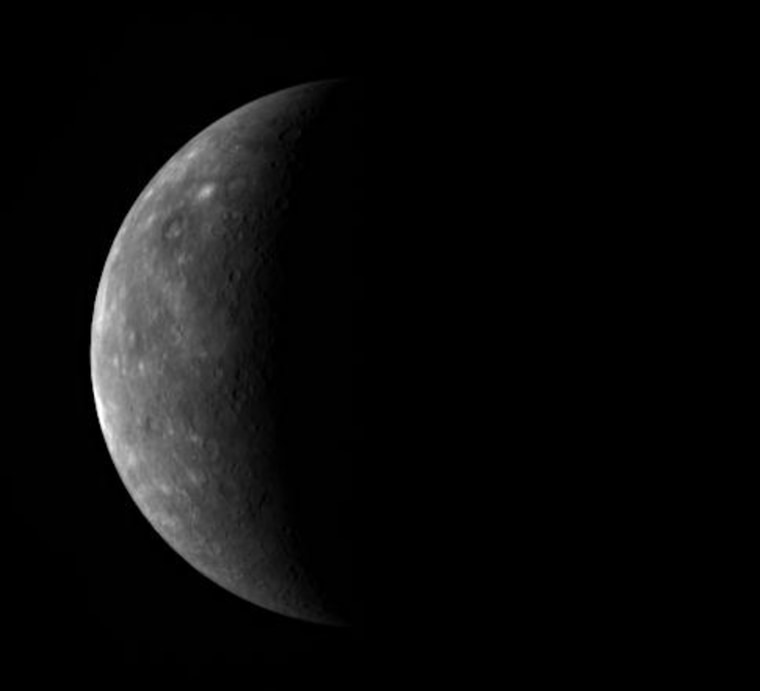A NASA spacecraft zoomed by Mercury on Tuesday to snap pictures of the planet's uncharted regions and fine-tune its path through the solar system, one that will ultimately place the probe in orbit around the small, rocky world.
The Messenger probe skimmed just 142 miles (228 km) above Mercury at its closest approach as it whipped around the planet during the flyby, the last of three designed to guide the spacecraft into orbit around the planet in 2011. The spacecraft was expected to snap about 1,559 new photographs of Mercury, including pictures of some regions never before observed up close.
"Radio signals received after the spacecraft emerged from behind the planet indicate that the spacecraft is operating nominally," flight controllers at Messenger's mission operations center at the Johns Hopkins University Applied Physics Laboratory in Laurel, Md., said in a statement. "Its instruments are now collecting images and other scientific measurements from the planet as it departs Mercury."
The first new images from the flyby are expected to be released on Wednesday.
Messenger made its closest approach to Mercury at about 5:55 p.m. ET when it sped by at about 12,000 mph (19,312 kilometers per hour). The probe then flew behind Mercury, passing out of communication with Earth for about an hour before restoring contact.
Mercury's gravity was expected to slow Messenger by about 6,000 mph (9,656 kilometers per hour) during the flyby and place it on track to enter orbit in March 2011. Messenger snapped a photo of the planet Sunday that revealed it as a half-lit, desolate-looking world as seen from a distance of about 418,000 miles (672,000 kilometers) away.
The $446 million spacecraft flew by Mercury twice in 2008 to map the planet in unprecedented detail while using the rocky world's gravitational pull to refine its flight path through space.
"A planetary flyby is really like Christmas morning for scientists," Messenger principal investigator Sean Solomon of the Carnegie Institution of Washington said before the rendezvous. "We expect to be surprised and we expect to be delighted."
In all, Messenger has photographed about 90 percent of Mercury's surface and was expected to cover another 5 percent of unmapped terrain when it flew by on Tuesday. The spacecraft is the first probe to visit Mercury since the NASA Mariner 10 mission in the mid-1970s.
Slideshow 12 photos
Month in Space: January 2014
Unlike Messenger's first two flybys - which revealed the first close-up views of Mercury in decades - Tuesday's rendezvous was aimed at observing specific points on the planet's surface. The probe was commanded to target its camera eyes at interesting craters, measure Mercury's magnetosphere and tenuous atmosphere, as well as study the planet's odd, cometlike tail of trace gases.
"This is the last look at Mercury's equatorial region, and it's the last time we fly through the tail," Solomon said.
When Messenger arrives in its final orbit around Mercury, it will begin a long-awaited observation phase that will complete its new maps of the planet. NASA launched Messenger — short for MErcury Surface, Space ENvironment, GEochemistry, and Ranging — in 2004. The probe swung past Earth once and Venus twice before beginning its three Mercury flybys.

